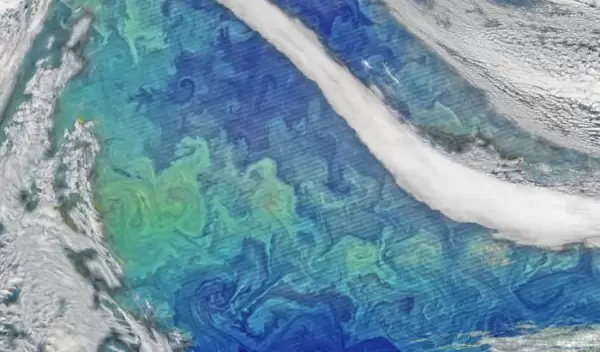
North Atlantic's marine productivity may not be declining, according to new study of older ice cores
To paraphrase author Mark Twain, reports of declining phytoplankton in the North Atlantic may have been greatly exaggerated. An earlier study used ice cores in Antarctica to suggest that marine productivity in the North Atlantic had declined by 10% during the industrial era, with implications that the trend might continue.
But U.S. National Science Foundation-supported research led by University of Washington scientists shows that marine phytoplankton — on which larger organisms throughout the marine ecosystem depend — may be more stable than believed in the North Atlantic. The team's analysis of an ice core going back 800 years shows that a more complex atmospheric process may explain the recent trends.
The U.S. National Science Foundation-supported findings were published in Proceedings of the National Academy of Sciences. “This study is a great example of the importance of basic research in understanding the complex interactions in the earth system -- land, ocean, ice sheets and atmosphere – under the influence of human activities,” said Rainer Amon, a program director in NSF’s Office of Polar Programs.
Tiny floating photosynthetic organisms known as phytoplankton form the base of the marine ecosystem. These microscopic creatures are also important to the planet, producing roughly half the oxygen in Earth's atmosphere.
Since phytoplankton are hard to count, scientists attempt to measure their abundance in other ways. Phytoplankton emit dimethyl sulfide, an odorous gas that gives beaches their distinctive smell. Once airborne, the dimethyl sulfide converts to methanesulfonic acid (MSA) and sulfate. These eventually fall out onto land or snow, making ice cores one way to measure past population sizes.
"Greenland ice cores show a decline in MSA concentrations over the industrial era, which was concluded to be a sign of declining primary productivity in the North Atlantic," said UW lead author Ursula Jongebloed. "But our study of sulfate in a Greenland ice core shows that MSA alone can't tell us the whole story when it comes to primary productivity."
Since the mid-1800s, factories and tailpipes have also been spewing sulfur-containing gases into the air. Those gases have slightly different forms of sulfur atoms which make it possible to distinguish the marine and land-based sources in ice cores.
The new study goes farther back than the previous one by measuring several sulfur-containing molecules in an ice core from central Greenland with layers spanning the years 1200 to 2006. The authors show that human-generated pollutants changed the atmosphere's chemistry. This, in turn, altered the fate of the gases emitted by phytoplankton.
"When looking at the ice cores, we found that sulfate derived from phytoplankton increased during the industrial era," Jongebloed said. "In other words, the decline in MSA is 'offset' by the simultaneous increase in phytoplankton-derived sulfate, indicating that phytoplankton-derived sulfur emissions have remained stable overall."
Added senior author Becky Alexander, a UW atmospheric scientist, "Measuring both MSA and phytoplankton-derived sulfate gives us a fuller picture of how the emissions from marine primary producers have changed — or not changed — over time."
